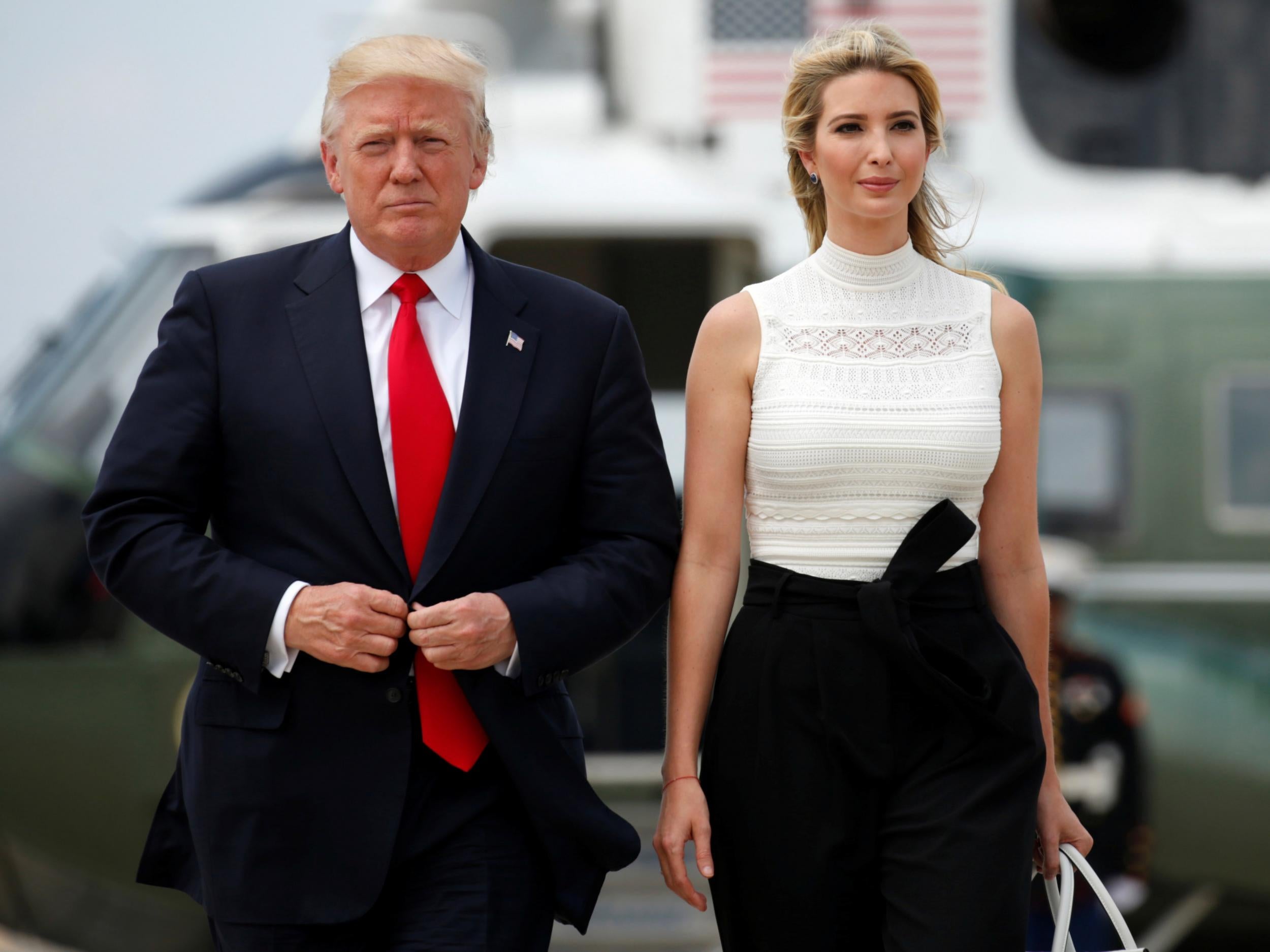Gender pay gap triples in Donald Trump's White House despite Ivanka's influence
Female staffers earn 63 cents for every male dollar under new administration

Your support helps us to tell the story
From reproductive rights to climate change to Big Tech, The Independent is on the ground when the story is developing. Whether it's investigating the financials of Elon Musk's pro-Trump PAC or producing our latest documentary, 'The A Word', which shines a light on the American women fighting for reproductive rights, we know how important it is to parse out the facts from the messaging.
At such a critical moment in US history, we need reporters on the ground. Your donation allows us to keep sending journalists to speak to both sides of the story.
The Independent is trusted by Americans across the entire political spectrum. And unlike many other quality news outlets, we choose not to lock Americans out of our reporting and analysis with paywalls. We believe quality journalism should be available to everyone, paid for by those who can afford it.
Your support makes all the difference.The pay gap between male and female White House staffers has more than tripled in the first year of the Trump administration, according to an analysis by economist Mark Perry of the American Enterprise Institute (AEI).
The median female White House employee is drawing a salary of $72,650 in 2017, compared to the median male salary of $115,000. “The typical female staffer in Trump's White House earns 63.2 cents per $1 earned by a typical male staffer,” Perry writes.
The 37 percent gender pay gap in Trump's White House is more than double the 17 percent gender pay gap nationally. According to the Pew Research centre, the Trump White House gender gap is wider than the national gender pay gap stood in 1980.
Other news outlets have reported smaller Trump White House pay gaps. But those outlets calculated the pay gap using average, rather than median salaries. Averages are often skewed by outliers at the high and low ends of the income spectrum, making them less reliable for understanding what a “typical” worker makes.
“To be as statistically accurate as possible, almost all reports on pay differences by gender compare median wages, income, or salaries and not differences in average (mean) pay,” the AEI's Perry writes.
Trump's gender pay gap is also up sharply from the 11 percent gender pay gap in the last year of the Obama White House, according to Perry's calculations. In Obama's first year, the gender pay gap was about 16 percent, according to an earlier Wonkblog analysis. It peaked at 18 percent in 2014.
The current Trump pay gap is considerably higher than the pay gap observed in any White House going back to 2003, according to an earlier Wonkblog analysis.
Perry's 2017 analysis excludes three staffers, including the President's daughter Ivanka Trump and son-in-law Jared Kushner, who are not being paid for their work at the White House.

In the White House and at the national level, much of the gender pay gap is due to the types of jobs men and women tend to be hired for: men tend to occupy higher-paying roles, while women tend to occupy lower-paying ones. This has led some conservative commentators to declare that the gender wage gap is a myth.
Perry notes that the highest-paid staffers in the Trump White House are primarily men: nearly 74 percent of the top 23 staffers are male. By contrast, in the Obama White House of 2015 only 52 percent of the highest-paid staffers were men.
As the Economic Policy Institute points out in its gender wage gap primer, “gender discrimination doesn't happen only in the pay-setting practices of employers making... A woman's occupational choice is the culmination of years of education, guidance by mentors, expectations of parents and other influential adults, hiring practices of firms, and widespread norms and expectations about work/family balance held by employers, co-workers, and society.”
Any of those steps can be shaped by gender discrimination, explicit or otherwise. The cumulative effect of that discrimination can lead to women being selected into lower-paying positions than men.
Barack Obama was vocal about the gender wage gap during his presidency. He signed the Lilly Ledbetter Fair Pay Act, which made it easier for employers to be sued over wage discrimination. He also announced new rules last year requiring large companies to report salary data by gender and ethnicity.
Donald Trump, by contrast, has rolled back Obama-era fair pay regulations but has otherwise not made the issue a focus of his presidency. Ivanka Trump, who declined pay for her work in the White House, has been vocal about womens' and family issues.
“Women deserve equal pay for equal work,” she said on Twitter earlier this year. “We must work to close the gender pay gap!”
The Washington Post
Join our commenting forum
Join thought-provoking conversations, follow other Independent readers and see their replies
Comments